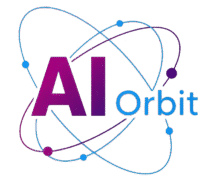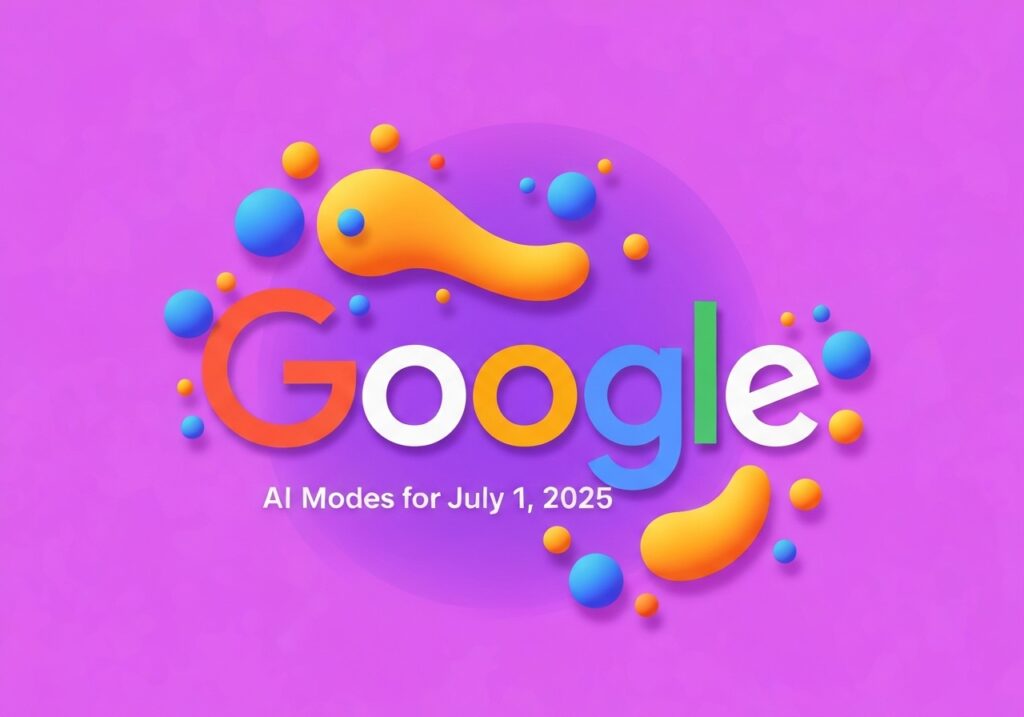In a significant strategic move, Google has utilized its most coveted digital real estate—the iconic Google Doodle on its homepage—to prominently feature “AI Mode.” This unprecedented promotion underscores a pivotal shift in the technology giant’s approach to search, signaling an intensified focus on artificial intelligence as the future of information retrieval. Dated July 1, 2025, this action is a clear response to the escalating competitive pressures from a burgeoning landscape of innovative AI startups, firmly cementing AI at the forefront of user interaction with the world’s most dominant search engine. The company’s decision to leverage a space traditionally reserved for celebrating historical figures and cultural events for a product promotion highlights the immense importance Google places on the rapid adoption and integration of its advanced AI capabilities.
The Google Doodle, a whimsical and often educational alteration of the Google logo, commands unparalleled global visibility. Its deliberate use for the promotion of AI Mode indicates that Google is not merely introducing a new feature but is actively steering millions of users towards a fundamentally different way of searching. This bold move is a testament to the ongoing evolution of search, transitioning from keyword-based queries to more conversational, generative, and intelligent interactions. As artificial intelligence rapidly reshapes digital landscapes, Google’s proactive stance is critical in maintaining its long-held dominion over how individuals access and process information online.
THE ICONIC GOOGLE DOODLE’S NEW PURPOSE
For decades, the Google Doodle has been a beloved and recognizable feature of the Google homepage, serving as a creative canvas to commemorate holidays, anniversaries, and the lives of celebrated artists, scientists, and pioneers. Its enduring popularity stems from its ability to inject a sense of discovery and delight into the daily routine of searching the web. Historically, the Doodle has been a symbol of Google’s appreciation for culture and history, a subtle nod to the richness of human endeavor.
However, the recent deployment of an animated image on the Google Chrome browser landing pages and the Google homepage, explicitly designed to direct users to AI Mode, represents a significant departure from this tradition. This is not merely an aesthetic update but a deliberate strategic maneuver. By transforming this globally visible piece of digital real estate into a promotional platform for AI Mode, Google unequivocally communicates its commitment to generative AI. This move is less about celebrating a moment in history and more about actively shaping the future of user engagement with its core product. A Google spokesperson confirmed that this particular placement is “just a fun promo,” distinguishing it from typical historical or cultural Doodles, yet its impact on user behavior and perception is undeniable. It’s a calculated effort to normalize and accelerate user adoption of AI-powered search, making it an integral part of their daily digital interactions, thereby reinforcing Google’s position as an innovation leader in the AI space.
DECODING AI MODE: GOOGLE’S GENERATIVE SEARCH EVOLUTION
AI Mode, often understood as the public-facing embodiment of Google’s broader Search Generative Experience (SGE), represents a profound evolution beyond traditional keyword-based search. It transforms the search engine from a mere indexer of information into a sophisticated conversational assistant capable of synthesizing answers to complex questions. Introduced more widely alongside its search results page in March of the previous year, AI Mode leverages Google’s flagship AI model, Gemini, to provide a chatbot-like experience that feels intuitive and comprehensive.
The core functionality of AI Mode lies in its ability to understand and respond to natural language queries, moving beyond simple keyword matching to grasp the intent and context behind a user’s question. This allows for a more fluid and interactive information discovery process. Users are no longer limited to typing precise keywords; they can pose questions in full sentences, engage in follow-up dialogues, and even provide input through voice commands or images. For instance, instead of searching for “best hiking trails Los Angeles,” a user could ask, “What are some dog-friendly hiking trails in the Santa Monica Mountains suitable for a beginner, and what gear do I need?” AI Mode would then generate a summarized, coherent response, potentially including trail names, difficulty levels, required equipment, and even direct links to relevant resources. This capability is particularly powerful for complex research, comparative analysis, or creative brainstorming, where traditional search might require dozens of clicks and cross-referencing. The product description, when clicked from the homepage, succinctly states: “Search whatever’s on your mind and get AI-powered responses.” This promise of comprehensive, AI-driven answers is a game-changer for digital information consumption, moving away from disparate search results to integrated, synthesized knowledge.
THE AI ARMS RACE: WHY GOOGLE IS PUSHING AI MODE
Google’s aggressive promotion of AI Mode is not merely an act of innovation but a defensive and offensive maneuver in the rapidly intensifying artificial intelligence arms race. The tech industry has witnessed an unprecedented surge in AI startups, many of which are directly challenging Google’s long-held dominance in search and information access. Key players like OpenAI, the creator of the widely acclaimed ChatGPT, have demonstrated the immense public appetite for conversational AI. Similarly, Anthropic, with its advanced Claude model, and Perplexity AI, which brands itself as an “AI-powered answer engine” focusing on accurate, cited responses, have further fragmented the landscape, presenting compelling alternatives to traditional search.
These startups have collectively pressured Google to accelerate its own AI integration efforts. Users are increasingly seeking immediate, summarized answers and conversational interactions rather than a list of links to sift through. This shift in user expectation demands a new paradigm for search, one that Google is actively striving to fulfill with AI Mode. The ability to directly answer complex questions, generate content, and summarize information efficiently represents a significant leap forward, designed to keep users within Google’s ecosystem. As users increasingly seek conversational and immediate answers, tools like Google’s AI Mode and even freely available alternatives such as Free ChatGPT highlight a broader industry trend towards accessible, AI-driven information retrieval. By showcasing AI Mode on its homepage, Google aims to:
- Educate Users: Introduce a vast, mainstream audience to the capabilities of generative AI in a familiar environment.
- Drive Adoption: Encourage users to experiment with AI Mode, fostering habits that rely on AI-powered answers.
- Counter Competition: Demonstrate that Google remains at the forefront of AI innovation, directly addressing the challenge posed by newer, agile AI-first companies.
- Collect Data: Accelerate the collection of user feedback and interaction data, which is crucial for refining and improving AI models like Gemini.
This strategic push is critical for Google to maintain its relevance and market share in an era where AI is rapidly redefining how people find, understand, and interact with information online. The stakes are incredibly high, as the future of search—and potentially the internet itself—is inextricably linked to advancements in artificial intelligence.
IMPACT ON USER EXPERIENCE AND INFORMATION DISCOVERY
The widespread adoption of AI Mode promises to fundamentally alter the user experience of information discovery. For the average internet user, the change will be immediate and noticeable. Instead of presenting a long list of blue links, AI Mode aims to provide a concise, distilled answer directly at the top of the search results page, often eliminating the need to click through multiple websites. This approach offers several advantages:
- Efficiency: Users can get answers to complex questions much faster, streamlining research and decision-making processes.
- Contextual Understanding: AI Mode’s ability to understand natural language and conversational nuances means users can ask questions more naturally, similar to how they would speak to another person.
- Synthesis of Information: For queries requiring information from multiple sources, AI Mode can synthesize these details into a single, coherent summary, saving users the effort of aggregating information themselves.
- Multi-Modal Input: The support for text, voice, and image input makes the search experience more accessible and versatile, catering to different user preferences and scenarios.
However, this transformation also introduces new considerations. The reliance on AI-generated summaries raises questions about source attribution, potential biases in synthesized information, and the risk of AI “hallucinations”—where the model generates factually incorrect but confidently presented information. Google is continuously working on these challenges, with ongoing efforts to integrate source citations more prominently and develop robust fact-checking mechanisms within AI Mode. The long-term impact on content creators and website publishers is also a significant concern, as fewer clicks might translate to reduced traffic for some traditional information sources. Google aims to balance providing direct answers with still sending traffic to valuable web resources, a complex equilibrium to maintain as AI capabilities advance.
THE BROADER IMPLICATIONS FOR THE FUTURE OF SEARCH AND AI
Google’s prominent display of AI Mode on its homepage is more than just a product launch; it’s a statement about the future direction of search and the company’s commitment to leading the artificial intelligence revolution. This move suggests a future where search is increasingly generative, personalized, and proactive, anticipating user needs rather than merely reacting to keyword inputs. The underlying AI models, such as Gemini, will continue to evolve, becoming more sophisticated in understanding context, nuance, and even subjective preferences.
The integration of AI Mode across Google’s vast ecosystem—from Search and Chrome to potentially other services like Google Maps, Google Shopping, and productivity tools—signifies a move towards a deeply interconnected AI experience. This ecosystem approach could further entrench Google’s position by offering a seamless and intelligent journey across various digital touchpoints. Furthermore, the aggressive rollout reflects Google’s strategy to rapidly gather user feedback and refine its AI offerings at scale, leveraging its massive user base as a continuous learning mechanism for its models.
Economically, the shift to AI-powered search presents both opportunities and challenges. While it promises enhanced user engagement and new avenues for advertising (perhaps through AI-generated recommendations), it also necessitates significant investments in computing infrastructure and AI research. The competition will remain fierce, driving continuous innovation from both established tech giants and nimble startups. Ultimately, the success of AI Mode will depend on its ability to consistently deliver accurate, helpful, and trustworthy information in a user-friendly manner, solidifying its place as the next evolution of online search and reaffirming Google’s leadership in the age of artificial intelligence.

